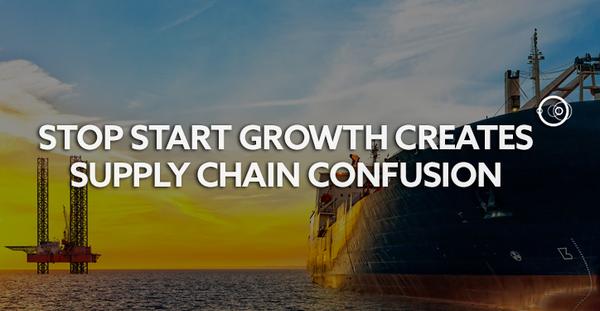There is across the board recognition that the cyclical oil and gas industry, which has been characterised by a series of peaks and troughs throughout its history, is now out of the worst from the most recent downturn and is starting to look up once more.
The dark days, when the oil price dropped below $28 per barrel for Brent crude in January 2016, are thankfully behind us. But the industry is not completely in the clear just yet.
Steady progress up to May 2018 saw oil prices reach $80 for the first time in four years. At that time there were assumptions the industry was on course to follow its normal progression out of a low period and display gradual but sustained growth. There were even suggestions that oil could reach $100 by the end of this year.
The reasons why this hasn’t happened are varied and complex, and are only in part due to the activities of the industry itself.
Excessive production predominantly from the U.S. shale sector and fluctuating demand forecasts particularly for Asia, which is seen as the greatest growth market for future energy requirements, have played a significant part in suppressing oil price increases in 2018.
But this year, geopolitical influences have played a leading role in determining commodity price, creating significant shock waves from the first quarter of the year onwards.
As an example, an oil price peak of $86 in October was linked to the announcement of U.S. sanctions against Iran. But as the fear of short-term fuel shortages declined in the financial markets, so too did the oil price. In November, Russian President Vladimir Putin declared $70 oil suited him fine. Then he said he was comfortable with $60 oil as the price continued to fall. Also, U.S. President Donald Trump congratulated Saudi Arabia on maintaining its high oil production levels.
However, at the beginning of December with oil having fallen to below $60 a barrel, Saudi-dominated OPEC and its allies including Russia agreed to a 1.2 million barrels a day production cut in the hope of stimulating price growth. It has been argued that greater cuts will be needed to make a meaningful difference. Volatility remains the industry watchword.
This stop-start pace of growth, and uncertainty over what the post downturn industry will look like, is creating a degree of confusion within the supply chain sector. With the focus on cost efficiencies through technological advances, collaboration, product standardisation and enhanced data deployment, today’s supply companies have to determine how, or even if, their current offering fits the current demands of operators.
After four challenging years of delivering products and services at lower or even unsustainable prices to support reduced project breakeven costs, suppliers may have been forgiven for hoping improving market conditions would lead to an easing of pricing pressures.
But, despite super majors including BP, Royal Dutch Shell, ExxonMobil, ConocoPhillips and Chevron announcing record-breaking earnings in 2018, a recent report from Wood Mackenzie suggests cyclical cost inflation could threaten lower breakeven costs for deepwater projects – a clear warning for suppliers not to expect too much too soon. And for those hoping rising oil prices will support increasing service costs, U.S. credit rating agency and financial analyst Moody’s recently claimed oil was unlikely to extend beyond $70 per barrel through to 2020.
Against this, some operators have been accused by the supply chain of continuing to base their rates on $28. Furthermore a mid-December report from Oil & Gas UK and Deloitte showed supply chain members themselves were finding it difficult to collaborate, despite agreeing that working together was important.
The oil industry has experienced considerable change since the dizzying financial heights of 2014 – much of it for the better - but the relationships within do not appear to have developed to the same extent. Greater understanding from all sides in the year ahead will help the industry to maximise the considerable opportunities that exist, even in a suppressed price environment.
Read more from our energy insights series.
